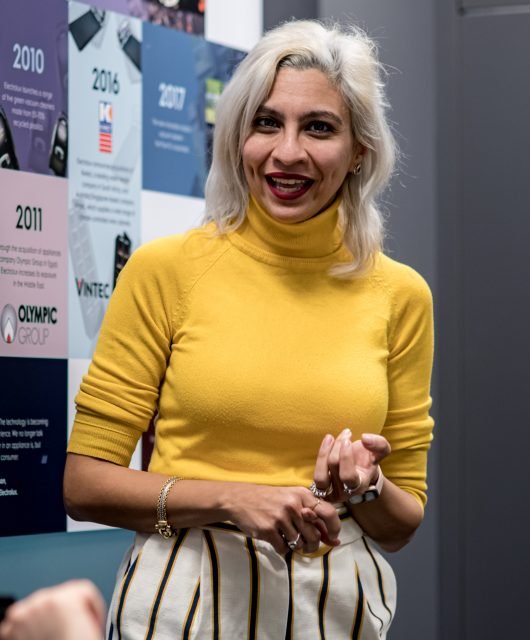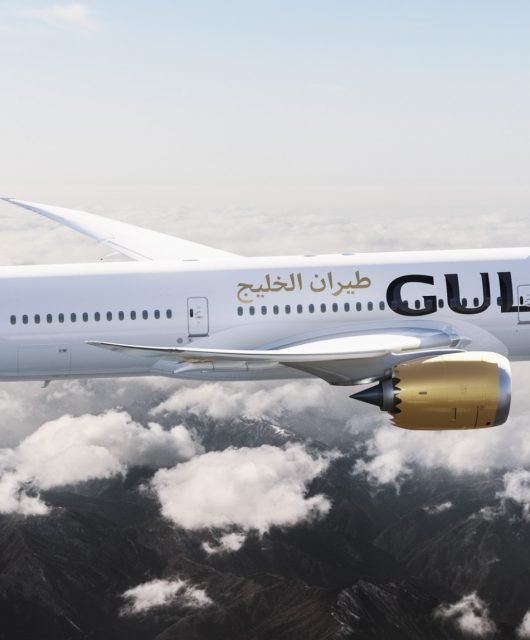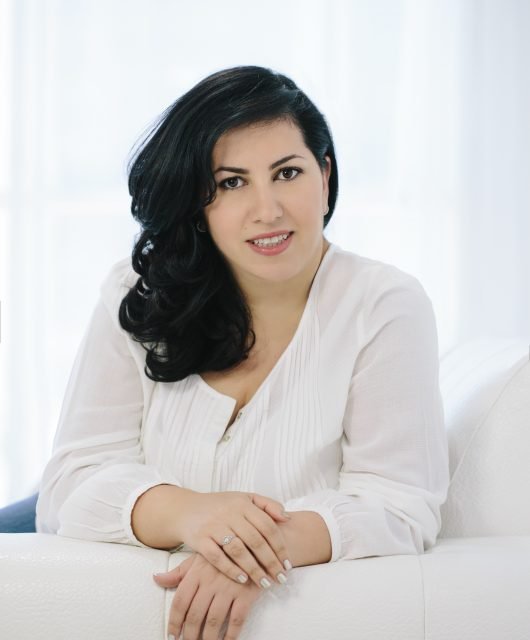Creativity, Courage, And The Oxford Dictionary of Quotations
By: Rasha Kawar, Senior Strategist, Landor
Sometimes playing it safe is the riskiest choice we can make. Sarah Ban Breathnach wasn’t talking about language when she said that. But her message is as relevant as ever in the context of brands and their choice of words.
Considering the transformative power of words to persuade, inspire, and simply help us connect with each other, it’s puzzling that so many brands sound indistinguishably similar. I was curious to unravel some of the techniques used by those who have gone against the grain. How has language helped brands not only be noticed, but also be memorable and distinctive?

1. Bend the rules of grammar
Let’s start with one of the catchiest phrases of our time, “Think Different”. Chances are if you were to ask the next person on the street which brand this line relates to, they’re going to get it right. Apple’s phrase has become timeless. Even though the brand doesn’t use it as much today, it is still widely remembered. One of the reasons for this is that the phrase is grammatically unfamiliar and unexpected (or perhaps as some may argue, blatantly wrong). The line should technically read “Think Differently”, but it doesn’t. That’s partly why it’s so effective. Indeed, those who dare to think differently, and act upon it in the context of words, have a significantly higher chance of leaving a mark on the minds of many.
Subway and Mountain Dew use a similar technique. Look at “Eat Fresh”. For a start, it’s a bit awkward. But the phrase wouldn’t be as memorable if it read something like “Eat Fresh Sandwiches”. If it were a race, “Do the Dew” would run circles around phrases like “Sip the Dew” or “Enjoy the Dew”. In a way, this is ‘bad’ writing that’s oh-so-good. Of course, these are examples of taglines which work well because they’re used sparingly. Chucking out the rules of ‘real writing’ at every turn may annoy people or, even worse, make them question your sanity.
Grammar organizes and directs, and clarity should always remain the primary goal. However, grammar can also enhance a point, convey personality, and ultimately help brands be more memorable. By placing periods where they typically wouldn’t be, such as after single words, Apple not only crafts impactful copy, but also conveys dynamism and simplicity.
Then there’s the ‘rule’ that sentences must never start with conjunctions. Some argue against its validity. Others defend it. And there are those who ingeniously go against it to make a point and create something that stands the test of time. Take, for instance, David Abbott’s Chivas Regal ‘Father’s Day’ ad. The copy consists of 25 lines, each starting with “because.” Brilliant. Because why not?
2. Be ‘culturally inside’ and thoughtfully champion colloquialisms
Language can help brands be more culturally relevant. Look at how the super app Careem has come to be associated with the colloquial Arabic word “Yalla”. Rather than standard, professional language (aka expected words that typically fall by the wayside), using “Yalla” in the right context – like when one’s ready for a ride, shows that Careem understands their audience and how people actually talk. Of course, this works well for Careem because they use words that reinforce the spirit of their brand. Otherwise, it would feel contrived. It was somewhat alarming when Kraft’s Mac & Cheese asked us to “send noods”. As good-intentioned as the line was (the brand was asking us to send noodles to friends and family), it was a bit too cheeky for a brand we associate with family dinner. Perhaps they should have gone for a cheesy pun.
3. Create new words or give new meaning and sounds to existing ones
Brave brands push language forward, and successful ones do so without complicating or obscuring their message. Consider the mission statement of Zeroco, a sustainability focused cleaning and body care brand from Australia, which reads “To untrash the planet”. It’s obvious that untrash is not a term in the Oxford Dictionary. But why say “clean up the planet” when you could say something far more original? When words are assembled distinctively, they are remembered.
Just look at the line coined more than fifty years ago, “Beanz meanz Heinz”. It takes skillz to get a phrase into the Oxford Dictionary of Quotations as is the case with Heinz, but it also takes the courage to be unusual and perhaps even seem a little bit silly. (Here’s some perspective on the Oxford Dictionary of Quotations: there are thousands of quotes in the eighth edition of the dictionary of which only 85 lines are brand/advertising lines…).
“Familymoon” used by the One&Only Resorts is both self-explanatory and memorable. “Newphoria” from Apple has all the freshness and brilliance we’ve come to expect from the brand. We all have friends, but “Friending” is something we do on Facebook to connect. The home range of “Beautilities” from the Italian brand Poltrona Frau is as beautiful as it is useful – linguistically and literally. Tesla appropriated the term “supercharger” and applied a whole new meaning to it. Look at “Solutions for a Smarter Planet” from IBM. It’s as smart today as it was back in 2008 and captures the crux of their message: let’s make the world more connected and intelligent.
In the twenty-twenties aren’t many of us facing “range anxiety” about our upcoming “glamping trip”? The point is, cultures change, and people change. Words need to move at the speed of culture. As T.S. Eliot put it, “last year’s words belong to last year’s language.” Why should brands use worn-out words to describe contemporary ideas?
4. Use words that challenge the logic of our senses
When words challenge the logic of our senses, they resonate. Without any superhuman powers, most of us can’t smell sound or taste colour, but that didn’t stop Skittles from asking us to “Taste the Rainbow.” And with Skittles, we’re always on a sensorially rich journey because they use language in ways that are bizarrely brilliant. Have a read of the brand’s origin story. You won’t be disappointed. Or take the high-performing, efficient Apple M1 Chip that “devours tasks and sips battery”. Drinks brand Ghia is “a vibrant, fresh, and satisfyingly bitter apéritif that tastes like summer on the rocks”. Ever heard such a flavorful description? It goes beyond delivering a message to stir hearts, minds, and salivary glands. Such is the power of words.
The right words need to land in the right ways, and that depends on many things. Like who’s talking, what we think of them, and what else they’ve said to us over their lifetime. Otherwise known as brand positioning in the marketing lexicon. When an organisation has a really strong sense of who it is and who it’s for, and intentionally uses language, form, and its creative license to emphasise what sets it apart, that’s when language can serve a brand. That’s where the extraordinary happens.
There is no shortage of great writers (and ChatGPT prompts) out there. For brands, it’s not only about the message but rather a commitment to courage, creativity, and style. Because well-considered words – delivered in the right way, at the right time, by the right brand – can mean the difference between getting noticed or ignored, remembered, or forgotten. It’s branding over blanding.
Who knows? It may even mean earning a spot in the Oxford Dictionary of Quotations.





